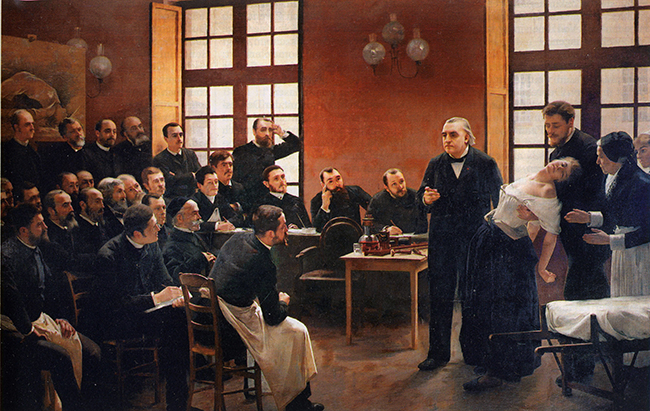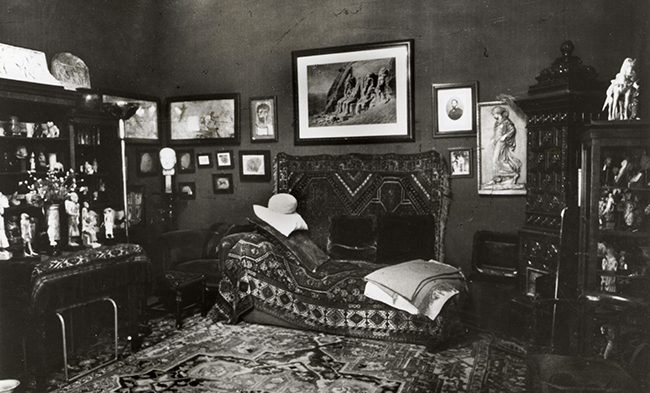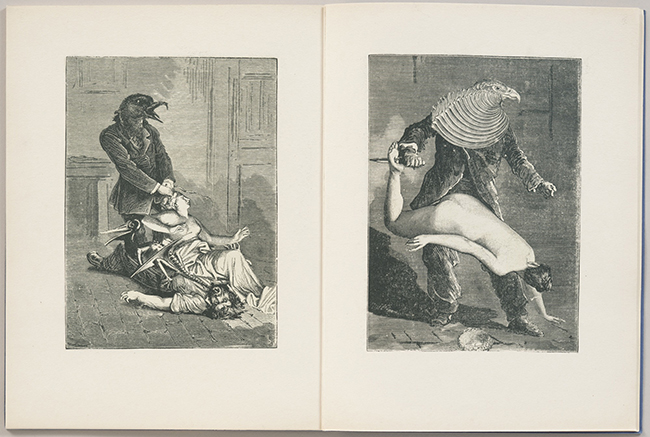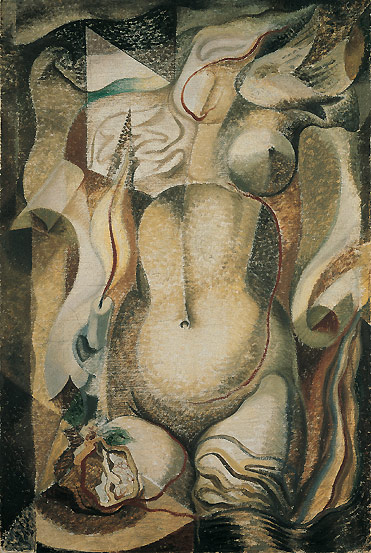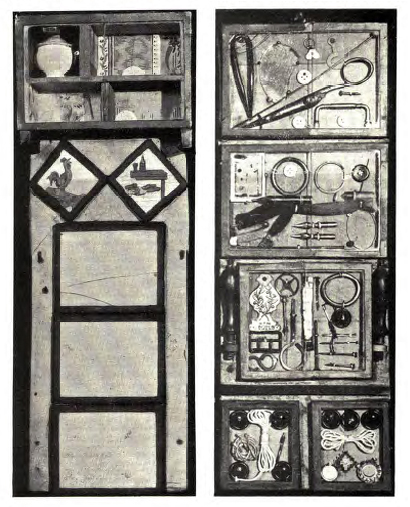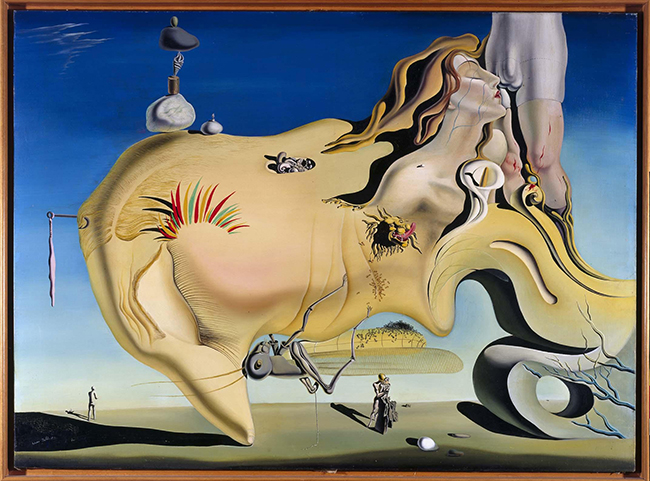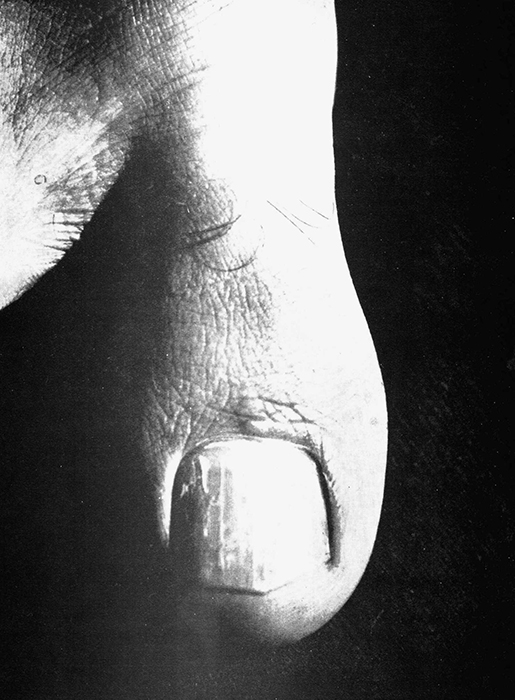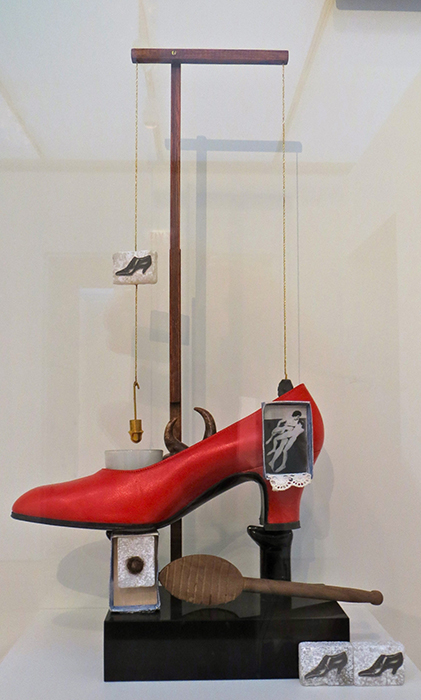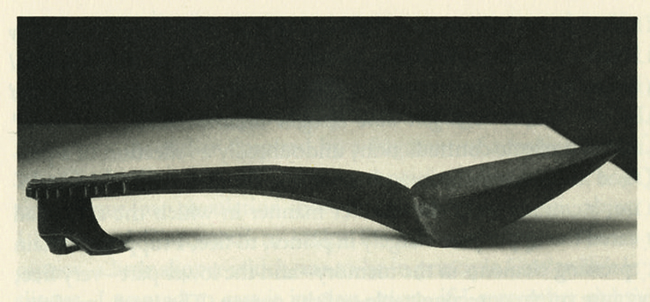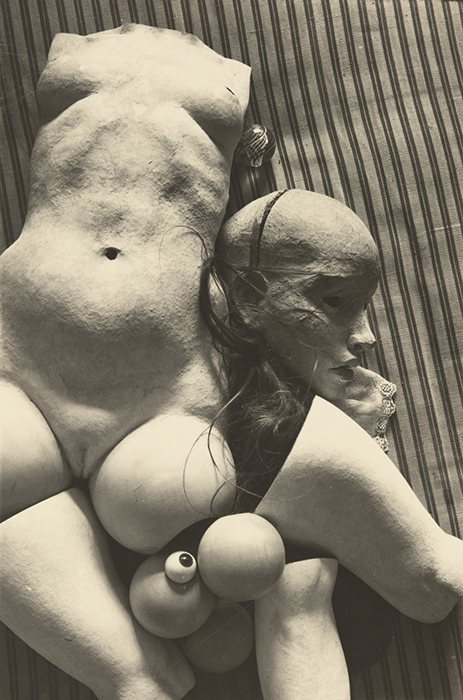Watch: Roundhouse Creative, Surrealism The Big Ideas https://vimeo.com/314885842
5.3 Surrealism
Surrealism and Psychoanalysis – By Dr. Charles Cramer and Dr. Kim Grant
Certain general concepts associated with psychoanalysis are useful for considering Surrealist art. The most important of these is the notion of the unconscious as a repository for thoughts and feelings that are generally unavailable to consciousness. Freud considered dreams to be coded expressions of unconscious fears, desires, and conflicts that could be deciphered and potentially resolved through analysis. In Freud’s view, neurosis was typically the result of unresolved conflicts and disruptions in early childhood psychosexual development. Sexuality, erotic desire, and violence are at the heart of Freudian theories of the mind. What lies buried in the unconscious are powerful and instinctual drives, repressed by civilization and rationality, which if inadequately resolved are detrimental to the individual’s, and ultimately society’s, mental health.
This notion informed Surrealist attitudes toward love and sexuality, which were primary subjects of their creative work. They were also a major focus of political statements and activities opposing conventional morality and constraints on the free expression of sexuality. It should be noted, however, that the Surrealist group’s promotion of liberated sexuality was limited and excluded male homosexuality.
Conflict and violence
Freud’s conception of the unconscious as a site of primal violence and conflict repressed from consciousness played a role in the work of many Surrealist artists. Max Ernst and André Masson, in particular, frequently employed images of sexual violence. Surrealist automatic techniques were thought to reveal unconscious thoughts and desires; thus, the repetition of erotic imagery and themes of violence that appear in many works were considered manifestations of what Ernst described as his “obsessions.” The dismembered and fragmented female nudes, knives, fish, birds, and cut pomegranates that populate Masson’s early Surrealist works similarly suggest the artist’s unconscious preoccupations.
The unconscious as creative source
André Breton explicitly rejected attempts to read Surrealist art as revealing the individual artists’ psychological history. Also, unlike Freud and his fellow psychoanalysts, the Surrealists had no interest in the therapeutic potential of Freud’s theories. They were interested in the unconscious as a creative source, not in the possibility of healing neurosis through psychoanalytic therapy. In fact, the Surrealists celebrated insanity as a form of mental liberation and published illustrations of objects made by patients in mental hospitals. They believed that to cure the mentally ill was to make them conform to stifling social conventions. In the Surrealists’ view, the insane created their own reality to satisfy their deepest desires, and as a result they were happy. The Surrealist goal was not to promote so-called normal psychological lives, but on the contrary to make reality accord with the “abnormality” of unconscious desires.
Displacement, which Freud considered the most striking achievement of dream work, is the mechanism of substituting symbols for objects or concepts to disguise the true nature of dream-thoughts. Among the common dream symbols he listed were knives and boxes as symbols for male and female genitalia, respectively.
In the mechanism of condensation, logical connections are lost or rearranged, and multiple associations may be connected to one object or image. Freud believed that the meaning of any given dream was unique, and only the dreamer with the help of an analyst could decipher the underlying thoughts and their significance. He also noted, however, that language and culture often determined dream symbolism and that there were common symbols to be found in many individuals’ dreams, as well as in fairytales and folklore.
The child denies this horrifying possibility by essentially granting his mother a substitute phallus in the form of another object, often, Freud theorized, one he saw just after he recognized his mother’s lack of penis, such as a foot or shoe. This becomes a fetish object, which is both highly desirable and a source of great anxiety, representing as it does both the fear of loss and the satisfying replacement of the lost object. Salvador Dalí, whose art often directly reflects Freudian theories, was influenced by Freud’s concept of the fetish when he developed the idea of Surrealist objects, and many of his own works include shoes and other common fetishes.
Breton similarly described the marvelous significance of discovering an ashtray in the form of a spoon attached to a shoe. Not all Surrealist objects have such immediately recognizable Freudian symbolism, but the complex depths of feeling that they arouse in their finders and makers, and potentially in their viewers as well, indicate their genesis in the depths of the erotic unconscious.
Art historians have also been interested in the psychoanalytic theories of Jacques Lacan, who as a young man was closely associated with the Surrealists. Lacan’s ideas on the formative role of vision in the psychological development of individual identity have been suggestively employed to analyze Surrealist artworks, particularly photography, as representing a form of pre-linguistic and thus pre-conscious experience.
Although Lacan’s writings are much less accessible to general understanding than Freud’s, they provide useful theoretical material for the investigation of a variety of topics that engaged Surrealist artists, including the psychology of representation, the disjunctions between visual and bodily experience, and the conflicts between desire and repressive social forms, particularly language.
Women and Surrealism
Explore

